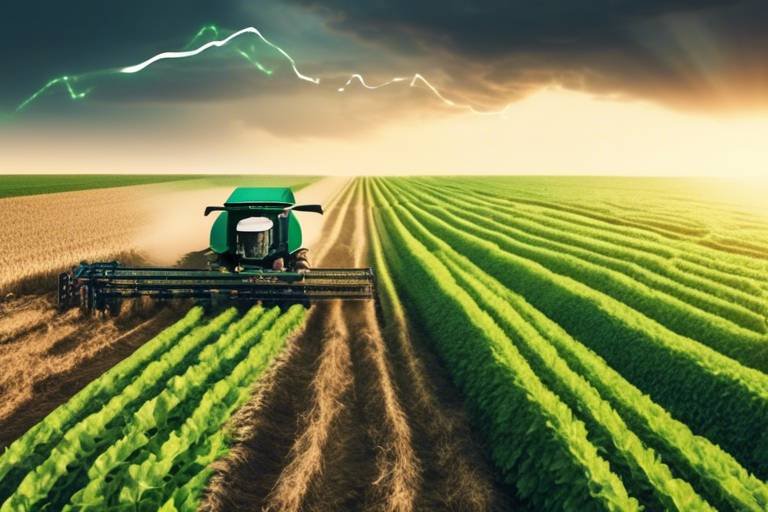The Future of Blockchain in Agricultural Supply Chains
In today's rapidly evolving world, blockchain technology is emerging as a game-changer, particularly within agricultural supply chains. Imagine a world where every potato, tomato, or grain of rice can be traced back to its origin with just a few clicks. Sounds revolutionary, right? This is precisely what blockchain offers—an opportunity to enhance transparency, improve efficiency, and build trust among consumers and producers alike. As we delve deeper into this topic, we'll explore how blockchain can reshape the agricultural landscape, paving the way for a more sustainable future.
At the heart of blockchain's appeal is its ability to provide a decentralized ledger. This means that every transaction is recorded across multiple systems, making it nearly impossible to alter or erase. As a result, stakeholders in agricultural supply chains can track the journey of their products from farm to table with unprecedented clarity. Imagine being able to scan a QR code on your food packaging and instantly access its entire history—where it was grown, how it was transported, and even the conditions it was stored in. This level of transparency not only empowers consumers but also cultivates trust in the entire supply chain.
With blockchain, the traceability of agricultural products is significantly enhanced. Consumers today are more conscious than ever about the origin and quality of their food. They want to know if their produce is organic, sustainably sourced, or free from harmful chemicals. Blockchain provides a solution to these queries by allowing consumers to verify the authenticity of their food. For instance, if a batch of lettuce is found to be contaminated, blockchain can help trace it back to the specific farm, ensuring that only the affected products are recalled rather than a whole shipment. This not only protects consumer health but also enhances the reputation of producers who prioritize safety.
As the demand for transparency grows, farmers and producers must adapt to meet these expectations. Blockchain technology stands out as an effective tool for achieving this. By utilizing blockchain, businesses can provide detailed information about their products, allowing consumers to make informed purchasing decisions. In a world where knowledge is power, being able to access a product's journey can significantly influence buying behavior. This shift is not just a trend; it's a fundamental change in how we think about food.
Numerous companies have already begun to harness the power of blockchain in their supply chains. For example, the multinational giant Walmart has implemented a blockchain system to track the origin of its produce. This initiative has drastically reduced the time it takes to trace food back to its source—from six days to just a few seconds! Such case studies highlight the effectiveness of blockchain in enhancing traceability and consumer trust in agricultural products.
Despite its numerous benefits, the adoption of blockchain in agriculture is not without challenges. Some of the key hurdles include:
- Technological Barriers: Many farmers lack the necessary technology to implement blockchain solutions.
- High Costs: The initial investment for blockchain technology can be prohibitive for small-scale farmers.
- Need for Collaboration: Successful implementation requires collaboration across the entire supply chain, which can be difficult to achieve.
These challenges highlight the need for a concerted effort to educate and support the agricultural community in adopting this transformative technology.
The integration of blockchain in agricultural supply chains also raises important regulatory questions. As this technology evolves, there is a pressing need for a framework that ensures compliance while fostering innovation. Policymakers must work closely with industry stakeholders to create regulations that not only protect consumers but also encourage the growth of blockchain solutions in agriculture.
Beyond transparency and traceability, blockchain technology can also streamline processes in agricultural supply chains. By automating transactions and utilizing smart contracts, blockchain reduces delays and inefficiencies. For instance, smart contracts can automatically execute agreements once specific conditions are met, minimizing disputes and speeding up transactions. This means farmers can receive payment faster, and consumers can enjoy fresher products.
Imagine a world where a farmer plants crops and, upon harvest, a smart contract automatically triggers payment from the buyer. This not only simplifies the process but also builds trust between parties. By eliminating the middleman, blockchain allows for more direct transactions, benefiting both producers and consumers.
Another significant advantage of blockchain is its ability to reduce fraud and waste in agricultural supply chains. With a secure and immutable record of transactions, it becomes much harder for bad actors to manipulate data or engage in unethical practices. This ensures that resources are utilized more effectively, ultimately leading to a more sustainable agricultural system.
Lastly, blockchain has the potential to promote sustainability in agriculture. By enabling better resource management and optimizing logistics, blockchain can help reduce the carbon footprint of supply chains. For example, farmers can monitor their water usage in real-time, ensuring that they are using resources efficiently. This not only benefits the environment but also improves the bottom line for producers.
Q: How does blockchain improve food safety?
A: By enhancing traceability, blockchain allows for quick identification of contaminated products, ensuring that only affected items are recalled.
Q: What are smart contracts?
A: Smart contracts are self-executing contracts with the terms of the agreement directly written into code, allowing for automatic transactions once conditions are met.
Q: Are there any downsides to using blockchain in agriculture?
A: Yes, challenges include technological barriers, high implementation costs, and the need for collaboration among stakeholders.

Enhancing Transparency
Blockchain technology is revolutionizing the agricultural supply chain by providing a decentralized ledger that offers unparalleled transparency. Imagine being able to trace the journey of your food from the farm to your table with just a few clicks. This newfound clarity allows all stakeholders—farmers, distributors, retailers, and consumers—to access real-time data about the products they handle. With blockchain, every transaction is recorded and time-stamped, creating a permanent record that cannot be altered. This means that if a problem arises, such as a food safety issue, it is easier than ever to pinpoint the source of the problem and address it swiftly.
The transparency provided by blockchain not only enhances trust among supply chain participants but also empowers consumers. Today’s consumers are more conscious than ever about where their food comes from. They want to know the farming practices used, the treatment of animals, and the environmental impact of their food choices. Blockchain meets this demand by offering a transparent view of the entire supply chain. For instance, consumers can scan a QR code on a product's packaging and instantly access detailed information about its origin, processing methods, and even the farm it came from. This level of transparency fosters a sense of trust that is crucial in today’s market.
Furthermore, the potential of blockchain to enhance transparency can be illustrated through various case studies. For example, several companies have implemented blockchain solutions that allow consumers to trace their products back to the source. One notable case is a partnership between a major supermarket chain and a blockchain startup, which enabled customers to see the complete history of their produce. This initiative not only boosted consumer confidence but also led to increased sales.
However, achieving transparency through blockchain is not without its challenges. The technology requires a certain level of digital literacy among all participants in the supply chain. Additionally, there are concerns about data privacy and security, particularly when it comes to sensitive information. Nevertheless, the benefits of enhanced transparency far outweigh the challenges, making blockchain a vital tool for the future of agriculture.
In conclusion, the integration of blockchain technology into agricultural supply chains is a game-changer. It not only enhances transparency but also builds trust among consumers and stakeholders alike. As the agricultural industry continues to evolve, embracing blockchain will be essential for meeting the increasing demand for transparency and accountability in food sourcing.
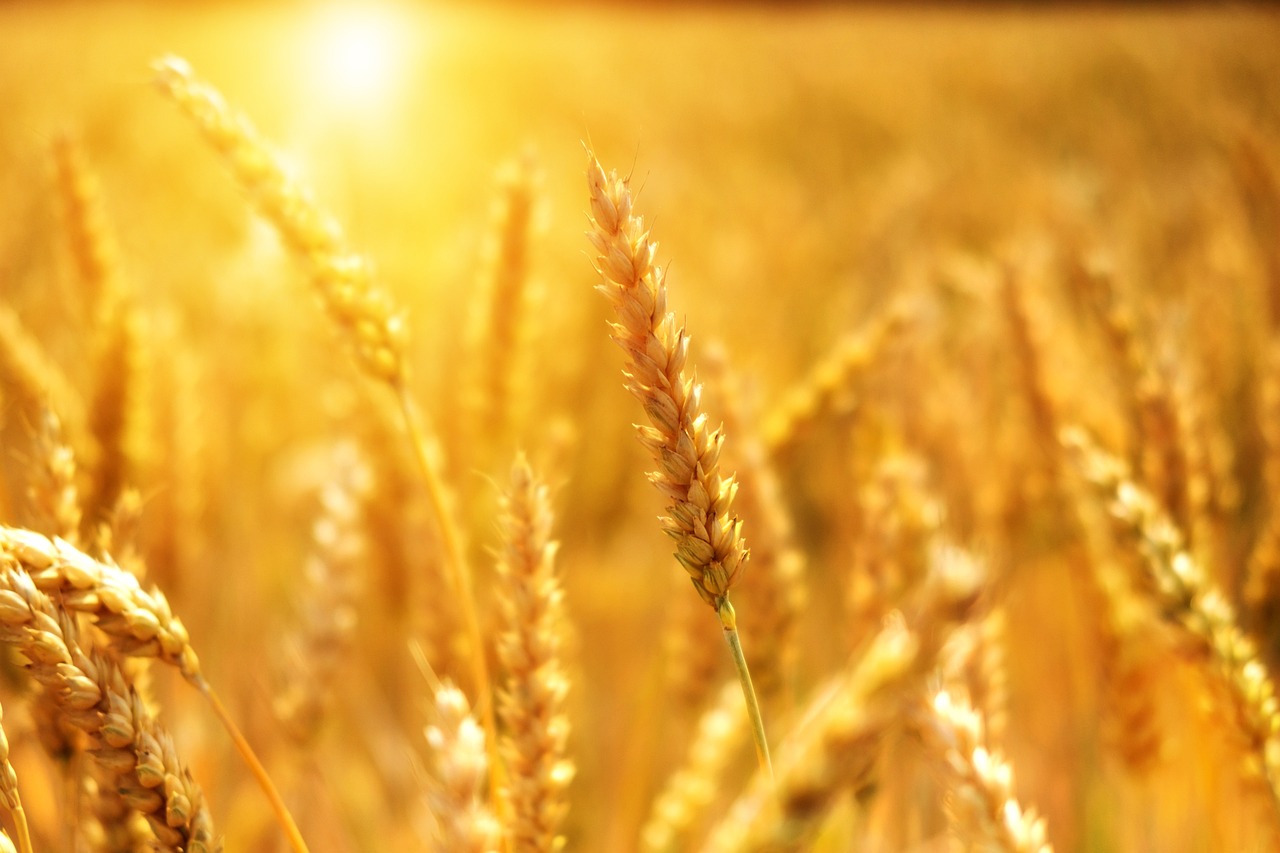
Improving Traceability
In today's fast-paced world, consumers are more concerned than ever about the origins of their food. They want to know where it comes from, how it’s produced, and whether it meets their quality standards. This is where blockchain technology steps in, revolutionizing the way we trace agricultural products. By creating a secure and transparent ledger, blockchain allows every participant in the supply chain—from farmers to retailers—to access real-time information about the journey of food products.
Imagine being able to scan a QR code on an apple and instantly see its entire journey: from the orchard it was picked in to the store shelf where you found it. This level of transparency not only enhances consumer confidence but also empowers them to make informed choices. With blockchain, every transaction is recorded in a way that is tamper-proof and easily verifiable. It’s like having a digital fingerprint for each product, ensuring that what you see is indeed what you get.
Moreover, the benefits of improved traceability extend beyond consumer trust. For producers, it means being able to quickly identify and address issues in the supply chain. If a batch of produce is found to be contaminated, blockchain allows for rapid identification of its source, minimizing the impact on public health and reducing waste. This capability is crucial in a world where food safety is paramount and recalls can lead to significant financial losses.
To illustrate the impact of blockchain on traceability, consider the following table:
| Aspect | Traditional System | Blockchain System |
|---|---|---|
| Data Accessibility | Limited to specific parties | Accessible to all stakeholders |
| Data Integrity | Prone to errors and manipulation | Immutable and secure |
| Speed of Response | Slow, often requiring manual checks | Real-time updates and alerts |
| Consumer Trust | Low, due to lack of information | High, due to transparency |
This table highlights how blockchain not only enhances traceability but also improves overall efficiency in the agricultural supply chain. With its ability to provide detailed, real-time information, blockchain technology is setting new standards for accountability and transparency.
As we move forward, the demand for traceability will only continue to grow. Consumers are becoming increasingly aware of the impact their choices have on health, the environment, and the economy. Blockchain stands ready to meet these demands, ensuring that every bite of food we consume is traceable, trustworthy, and transparent. The future of food is not just about what we eat but also about understanding the story behind it, and blockchain is the key to unlocking that story.
- What is blockchain technology? - Blockchain is a decentralized digital ledger that records transactions across multiple computers in a way that the registered information cannot be altered retroactively.
- How does blockchain improve traceability in agriculture? - By providing a secure and transparent record of each transaction, blockchain allows all stakeholders to track the journey of agricultural products from farm to table.
- What are the benefits of improved traceability for consumers? - Improved traceability enhances consumer trust, allows for informed purchasing decisions, and ensures food safety by quickly identifying sources of contamination.
- Are there challenges to implementing blockchain in agriculture? - Yes, challenges include technological barriers, high costs, and the need for widespread collaboration among industry players.
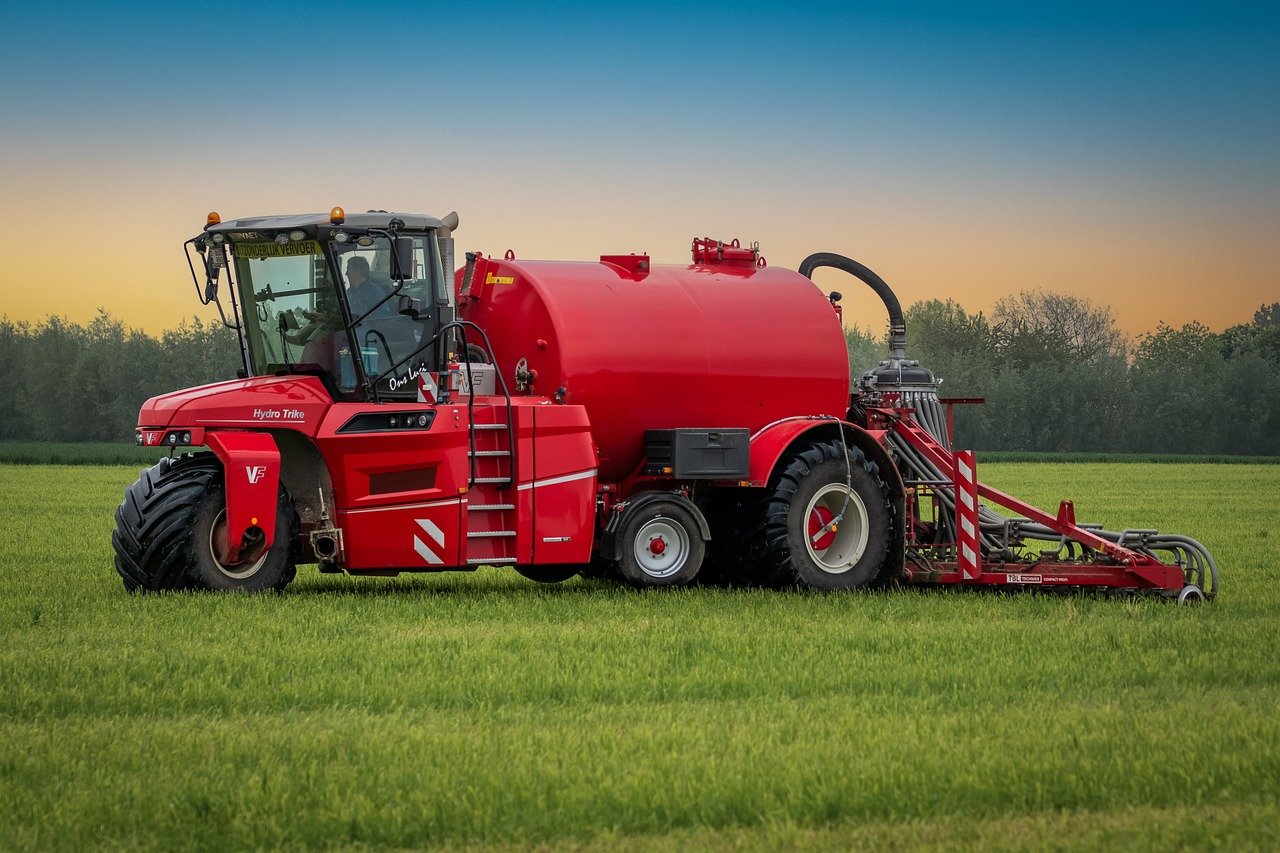
Consumer Demand for Transparency
In today's world, where information is at our fingertips, consumers are increasingly demanding transparency in the products they purchase. This shift in consumer behavior is not just a passing trend; it's a fundamental change in how we view food sourcing and safety. People want to know where their food comes from, how it was produced, and what goes into it. The rise of social media and online platforms has empowered consumers to voice their concerns and preferences, making transparency a crucial factor in purchasing decisions.
Imagine walking into a grocery store and picking up a product. With just a quick scan of a QR code, you can access a wealth of information about that item—its origin, the farming practices used, and even the journey it took to reach your plate. This level of insight is what consumers crave, and blockchain technology is poised to deliver it. By leveraging a decentralized ledger, blockchain allows for real-time tracking of agricultural products, ensuring that every step of the supply chain is documented and verifiable.
Moreover, as more consumers become aware of issues like food fraud and unethical farming practices, their demand for transparency only intensifies. A recent survey revealed that over 60% of consumers are willing to pay more for products that come with clear information about their sourcing and production methods. This indicates a significant shift towards valuing ethical consumption, which can be a game-changer for brands looking to build trust and loyalty.
It's not just about knowing the source; it's about feeling confident in the quality and safety of what you're eating. When consumers can verify the integrity of their food, it fosters a sense of trust that can enhance brand loyalty and encourage repeat purchases. To illustrate this point, consider the following table that outlines consumer preferences regarding food transparency:
| Aspect of Transparency | Consumer Preference (%) |
|---|---|
| Origin of Ingredients | 75% |
| Farming Practices Used | 65% |
| Supply Chain Journey | 55% |
| Certifications and Standards | 70% |
This data clearly shows that consumers are not just curious; they are actively seeking out products that provide transparency. Brands that embrace this demand stand to gain a competitive edge in the market. They can leverage blockchain technology to showcase their commitment to transparency, thereby attracting a more conscientious consumer base.
As we move forward, it’s essential for agricultural producers and supply chain stakeholders to recognize this shift. By implementing blockchain solutions, they can not only meet consumer expectations but also pave the way for a more sustainable and ethical agricultural industry. The future of food is transparent, and those who adapt will thrive in this new landscape.
- How does blockchain enhance transparency in agriculture?
Blockchain provides an immutable record of transactions, allowing all stakeholders to trace the journey of products from farm to table. - What are the benefits of consumer transparency?
Transparency builds trust, encourages ethical consumption, and can lead to increased customer loyalty. - Are consumers willing to pay more for transparency?
Yes, studies show that many consumers are willing to pay a premium for products that offer clear sourcing and production information.

Case Studies of Successful Implementation
When it comes to the real-world application of blockchain technology in agricultural supply chains, several pioneering companies have emerged as shining examples. These case studies not only highlight the transformative potential of blockchain but also demonstrate how it can effectively address the challenges faced by the agricultural sector. One such notable instance is the collaboration between IBM Food Trust and various food producers. This initiative has enabled stakeholders to trace the journey of food products, from the farm to the consumer's plate. By scanning a simple QR code, consumers can access detailed information about the origin of their food, including the farm it came from, the processing steps it underwent, and even the conditions under which it was stored. This level of transparency has not only built consumer trust but also encouraged producers to maintain high standards of quality.
Another compelling case study comes from the seafood industry, where Provenance has implemented blockchain to combat fraud and improve sustainability. By providing a digital passport for seafood products, Provenance allows consumers to verify the authenticity of their purchases. This initiative has been particularly effective in combating issues like illegal fishing and mislabeling, which have plagued the industry for years. By ensuring that consumers can trace their seafood back to its source, Provenance is not only enhancing trust but also promoting responsible fishing practices.
In the realm of coffee, the startup Everledger has taken significant strides by utilizing blockchain to create a transparent supply chain for coffee producers. By recording every transaction on a decentralized ledger, Everledger ensures that farmers receive fair compensation for their products. This initiative has empowered smallholder farmers, allowing them to connect directly with consumers and eliminate intermediaries who often take a substantial cut of the profits. As a result, farmers are more motivated to produce high-quality coffee, and consumers can enjoy a product that they know is ethically sourced.
These case studies illustrate the diverse applications of blockchain technology in agricultural supply chains. They not only enhance transparency and traceability but also foster a sense of community among producers and consumers. As more companies recognize the benefits of blockchain, we can expect to see an increasing number of successful implementations that will further revolutionize the agricultural sector.
- What is blockchain technology? Blockchain is a decentralized digital ledger that records transactions across multiple computers, ensuring that the recorded information cannot be altered retroactively.
- How does blockchain enhance transparency in agriculture? By providing a secure and immutable record of transactions, blockchain allows all stakeholders in the supply chain to access real-time information about the journey of agricultural products.
- What are smart contracts? Smart contracts are self-executing contracts with the terms of the agreement directly written into code, allowing for automatic execution once predetermined conditions are met.
- Can blockchain reduce fraud in agricultural supply chains? Yes, blockchain's secure and transparent nature significantly reduces the risk of fraud by providing an unalterable record of transactions.
- What are the challenges in adopting blockchain in agriculture? Challenges include technological barriers, high implementation costs, and the need for collaboration across the industry.
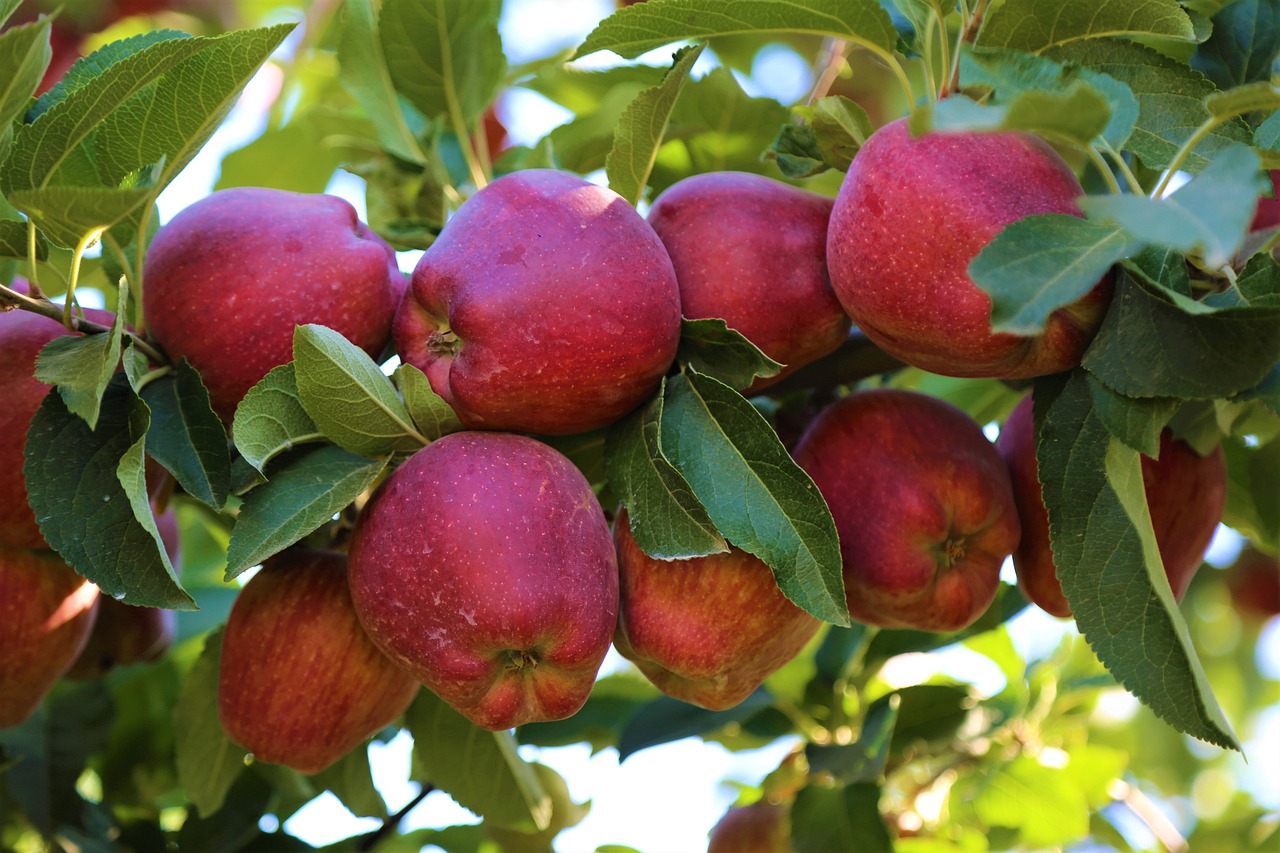
Challenges in Adoption
While the potential of blockchain technology in agricultural supply chains is undeniably promising, the road to its widespread adoption is fraught with challenges. One of the most significant hurdles is the technological barrier. Many stakeholders in the agricultural sector, especially small-scale farmers, may lack the necessary infrastructure or technical expertise to implement blockchain solutions effectively. This gap can lead to a digital divide where only larger, tech-savvy companies benefit from the advancements, leaving smaller players behind.
Moreover, the high costs associated with implementing blockchain technology can deter many businesses from making the switch. From investing in new software to training personnel, the initial financial outlay can be substantial. For many agricultural businesses operating on thin margins, this can be a dealbreaker. It's akin to trying to buy a high-end sports car with a budget meant for a used sedan; the benefits might be clear, but the upfront costs can be overwhelming.
Another challenge lies in the need for industry-wide collaboration. Blockchain thrives on participation and data sharing among all players in the supply chain—from farmers to distributors to retailers. However, convincing various stakeholders to share sensitive information can be a tough sell. Each party may be hesitant to relinquish control or expose their operations to competitors, leading to fragmented systems that fail to leverage the full potential of blockchain. This situation is similar to a team of players in a relay race who refuse to pass the baton; without cooperation, the race is lost.
Additionally, there are regulatory considerations that must be addressed. The integration of blockchain into agricultural supply chains raises questions about compliance with existing laws and regulations. There is a pressing need for a framework that not only ensures adherence to these regulations but also fosters innovation. Without clear guidelines, businesses may be reluctant to invest in blockchain technology, fearing potential legal repercussions.
In summary, while blockchain technology holds transformative potential for agricultural supply chains, the challenges of technological barriers, high costs, industry collaboration, and regulatory compliance must be navigated carefully. Overcoming these obstacles will require concerted efforts from all stakeholders involved, as well as a willingness to embrace change for a more transparent and efficient agricultural future.
- What is blockchain technology?
Blockchain is a decentralized digital ledger that records transactions across multiple computers in a way that ensures the security and transparency of the data. - How does blockchain improve transparency in agriculture?
By providing a secure and immutable record of transactions, blockchain allows all stakeholders to track the journey of agricultural products from farm to table, ensuring greater visibility. - What are smart contracts?
Smart contracts are self-executing contracts with the terms of the agreement directly written into code. They automatically execute transactions when predefined conditions are met. - What are the main challenges in adopting blockchain in agriculture?
Key challenges include technological barriers, high implementation costs, the need for industry-wide collaboration, and regulatory compliance issues.
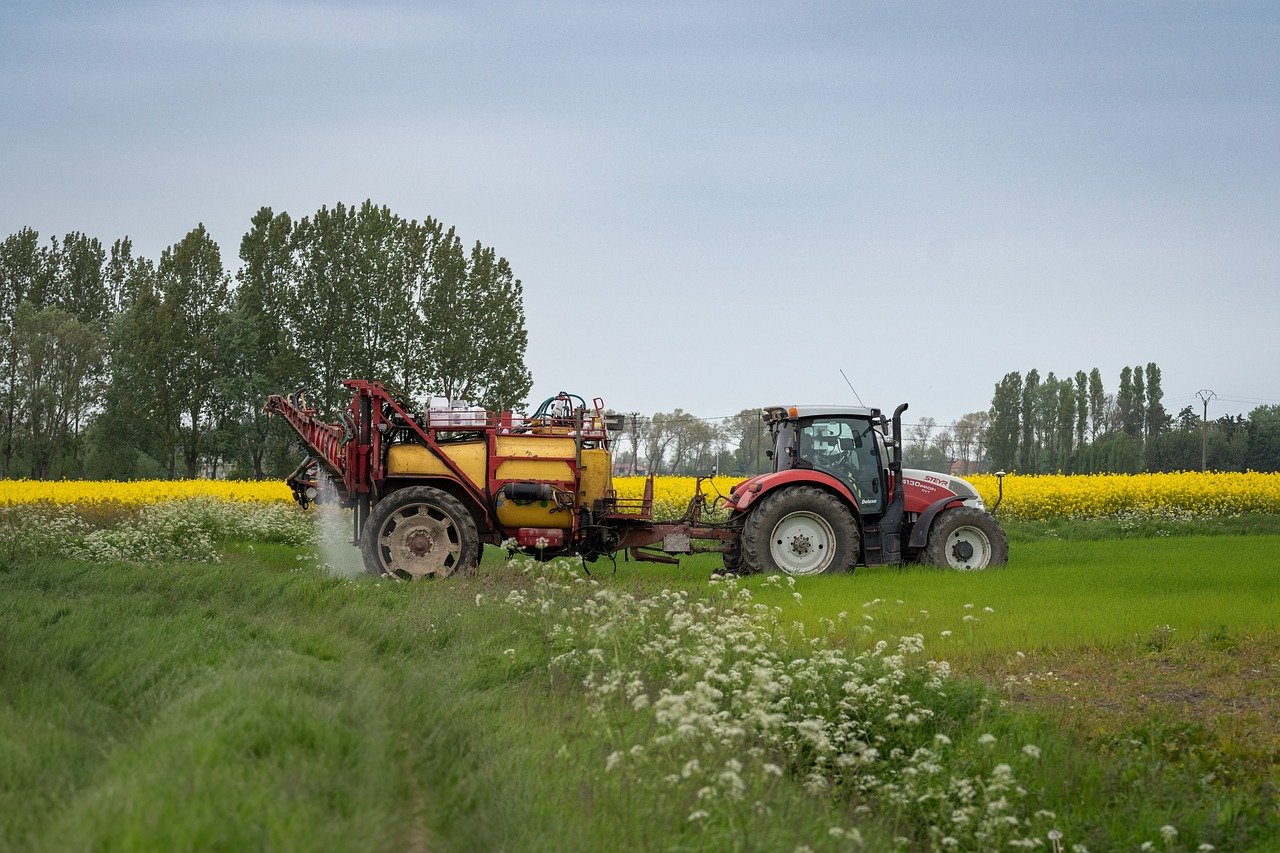
Regulatory Considerations
As blockchain technology finds its footing in agricultural supply chains, it inevitably raises a plethora of that must be addressed. Imagine a world where every transaction in the supply chain is recorded on a digital ledger that is transparent and immutable. Sounds great, right? But this innovation doesn’t come without its hurdles. One of the primary concerns is the need for a regulatory framework that not only ensures compliance with existing laws but also encourages innovation and growth.
Regulators need to understand the technology deeply to create effective policies. This requires collaboration between tech developers, agricultural experts, and government bodies. Without this collaboration, we risk creating regulations that are either too strict, stifling innovation, or too lenient, failing to protect consumers and the environment. An effective regulatory framework should address key areas such as:
- Data Privacy: Who owns the data recorded on the blockchain? How is it protected?
- Consumer Protection: How can we ensure that consumers are not misled by false claims about product origins?
- Interoperability: How will different blockchain systems communicate with each other, especially across borders?
Furthermore, the global nature of agricultural supply chains adds another layer of complexity. Different countries have varying regulations regarding food safety, labeling, and traceability. A standardized approach to blockchain implementation could help harmonize these regulations, making it easier for companies to operate internationally. However, achieving this standardization will require significant effort and cooperation from multiple stakeholders.
Another important consideration is the need for ongoing education and training for those involved in the agricultural supply chain. Farmers, distributors, and retailers must understand how to utilize blockchain technology effectively. This is where government and industry partnerships can play a crucial role, providing resources and training programs to ensure everyone is on the same page.
In summary, while blockchain technology presents a revolutionary opportunity for agricultural supply chains, it also necessitates a thoughtful approach to regulation. By fostering collaboration among stakeholders and developing a robust regulatory framework, we can ensure that the benefits of blockchain are realized while protecting consumers and promoting sustainable practices.
- What is blockchain technology? Blockchain is a decentralized digital ledger that records transactions across many computers securely and immutably.
- How does blockchain enhance transparency in agriculture? By providing a clear and traceable record of every transaction, stakeholders can track products from farm to table.
- What are smart contracts? Smart contracts are self-executing contracts with the terms of the agreement directly written into code, automating processes and reducing disputes.
- What challenges does blockchain face in agriculture? Challenges include technological barriers, high implementation costs, and the need for industry-wide collaboration.

Enhancing Efficiency
In the bustling world of agriculture, where time is often of the essence, efficiency can be the difference between profit and loss. Blockchain technology emerges as a game-changer, streamlining processes and reducing delays that have plagued the agricultural supply chain for far too long. By leveraging a decentralized ledger, stakeholders can automate transactions and enhance communication, leading to a smoother flow of goods from farm to consumer. Imagine a world where paperwork is minimized, and transactions are executed with the click of a button—this is the promise blockchain holds.
One of the standout features of blockchain is the implementation of smart contracts. These are self-executing contracts with the terms of the agreement directly written into code. When conditions are met, the contract automatically executes, eliminating the need for intermediaries and reducing the time taken to finalize deals. For instance, if a farmer agrees to sell a certain quantity of produce to a retailer, a smart contract can ensure that payment is released immediately upon delivery. This not only speeds up transactions but also minimizes disputes, as all parties have access to the same transparent data. The result? A more agile supply chain that adapts to changing conditions in real-time.
Moreover, blockchain can help in reducing fraud and waste within agricultural supply chains. Traditional systems often rely on paper trails that can easily be manipulated or lost, leading to discrepancies that cost both time and money. In contrast, blockchain provides a secure and immutable record of every transaction. This means that once data is entered, it cannot be altered or deleted, creating a trustworthy environment for all stakeholders. For example, if a shipment of organic tomatoes is reported as spoiled, the blockchain can trace back through the supply chain to identify where the breakdown occurred, allowing for immediate corrective action. This level of transparency not only protects businesses but also ensures that resources are utilized more effectively, reducing waste.
To illustrate the potential impact of blockchain on efficiency, consider the following table, which outlines key areas where blockchain can make a significant difference:
| Area of Impact | Traditional Method | Blockchain Method |
|---|---|---|
| Transaction Speed | Days to weeks | Instant |
| Dispute Resolution | Time-consuming | Automated |
| Data Security | Vulnerable to tampering | Immutable and secure |
| Resource Utilization | High waste | Optimized |
As we delve deeper into the agricultural landscape, it becomes clear that the integration of blockchain technology is not just a trend; it’s a necessity for enhancing efficiency. The ability to streamline operations, reduce delays, and improve resource management will enable farmers, distributors, and retailers to respond more effectively to market demands. In this ever-evolving industry, those who embrace these innovations will undoubtedly stay ahead of the curve, paving the way for a more efficient and sustainable agricultural future.
- What is blockchain technology?
Blockchain is a decentralized digital ledger that records transactions across multiple computers, ensuring that the recorded transactions cannot be altered retroactively. - How does blockchain improve efficiency in agriculture?
By automating transactions through smart contracts and providing a transparent record of all transactions, blockchain reduces delays and minimizes disputes. - Can blockchain help reduce fraud in agricultural supply chains?
Yes, blockchain creates an immutable record of transactions, making it difficult to alter information and thus reducing the chances of fraud. - What are smart contracts?
Smart contracts are self-executing contracts with the terms directly written into code, allowing for automatic execution once conditions are met.
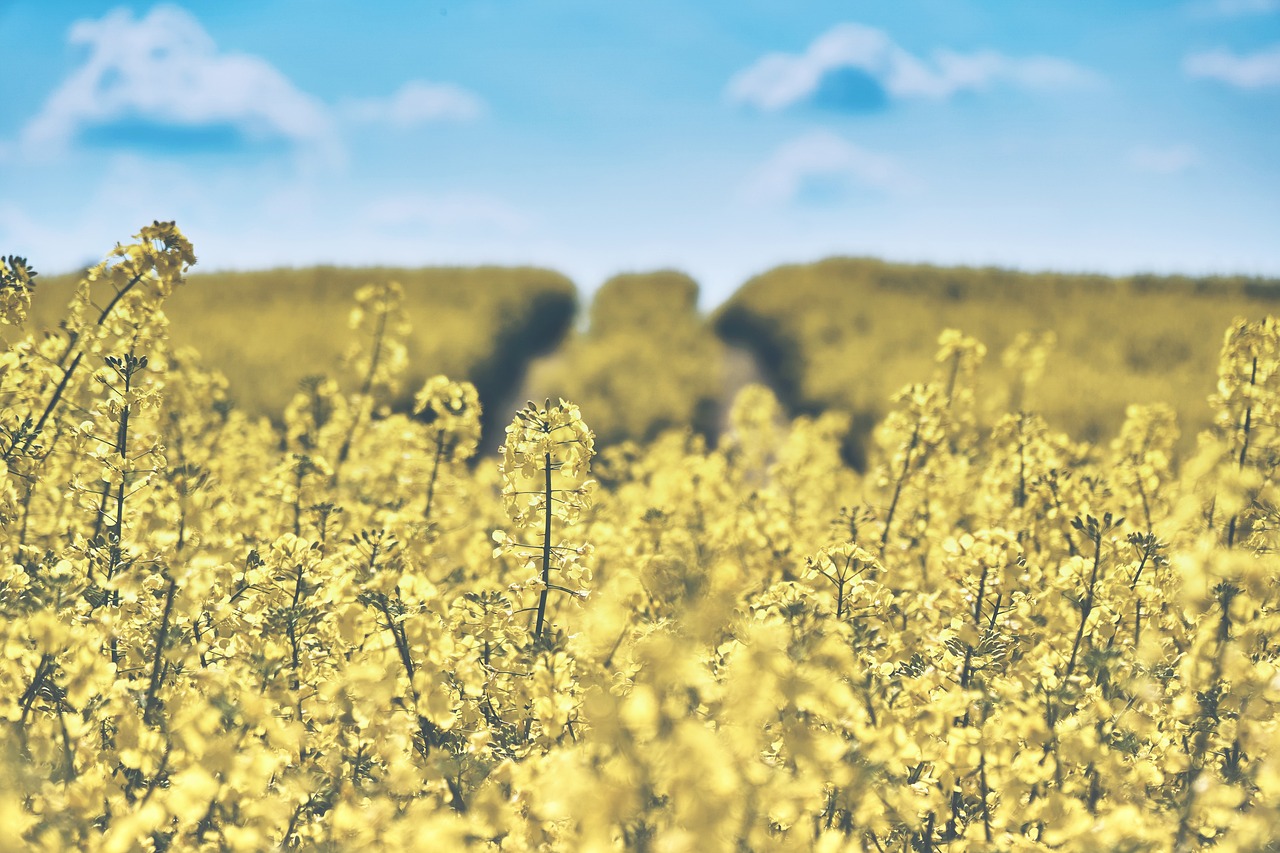
Smart Contracts in Agriculture
In the rapidly evolving landscape of agriculture, smart contracts are emerging as a game-changer, revolutionizing the way transactions are executed and agreements are enforced. Imagine a world where contracts are not just pieces of paper but dynamic, self-executing agreements that automatically fulfill their terms when conditions are met. This is the essence of smart contracts, powered by blockchain technology.
At its core, a smart contract is a set of programmed rules that governs the exchange of value between parties. For instance, consider a farmer who sells produce to a distributor. Traditionally, this transaction would involve a lot of back-and-forth communication, paperwork, and potential disputes over delivery and quality. However, with smart contracts, the entire process becomes seamless. The contract could be set to release payment automatically once the produce is delivered and verified against pre-defined quality standards.
This automation not only speeds up the transaction process but also minimizes the chances of disputes. In essence, smart contracts act like a trusted intermediary, ensuring that both parties adhere to their commitments. This is particularly beneficial in agriculture, where timely transactions can significantly impact the quality and freshness of products.
Moreover, smart contracts can incorporate various conditions that enhance transparency and accountability. For example, they can be programmed to include weather conditions or market prices as variables that affect the agreement. If the weather is unfavorable, the contract could adjust payment terms or delivery schedules accordingly, thus providing flexibility in an industry often subject to unpredictable factors.
To illustrate the potential of smart contracts in agriculture, let’s take a look at a simple table comparing traditional contracts with smart contracts:
| Aspect | Traditional Contracts | Smart Contracts |
|---|---|---|
| Execution | Manual execution with potential delays | Automatic execution upon meeting conditions |
| Dispute Resolution | Often requires legal intervention | Minimized disputes due to clear conditions |
| Transparency | Limited visibility for stakeholders | Full visibility on transaction history |
| Cost | Higher administrative costs | Lower costs due to automation |
As we delve deeper into the implications of smart contracts in agriculture, it becomes clear that they not only enhance efficiency but also foster a culture of trust. Farmers and distributors can engage in transactions knowing that the terms are clear, and the execution is guaranteed. This trust is crucial in an industry that often grapples with issues of fraud and miscommunication.
In conclusion, the integration of smart contracts into agricultural practices represents a significant leap towards a more efficient and transparent supply chain. As the industry continues to embrace technology, the potential for innovation is limitless, paving the way for a future where farmers, suppliers, and consumers all benefit from a more streamlined and trustworthy agricultural ecosystem.

Reducing Fraud and Waste
In the agricultural sector, fraud and waste have long been the bane of efficiency and sustainability. With the introduction of blockchain technology, there's a significant opportunity to tackle these issues head-on. Imagine a world where every transaction is recorded in a way that cannot be altered or tampered with. That's the power of blockchain! By providing an immutable record of transactions, blockchain ensures that every step of the supply chain is transparent and traceable.
One of the most compelling aspects of blockchain is its ability to create a secure digital trail for agricultural products. This means that from the moment a product leaves the farm, its journey can be tracked in real time. This level of transparency not only helps in identifying and preventing fraud but also reduces waste. For instance, if a batch of produce is found to be spoiled, stakeholders can quickly trace back to the source, identifying any lapses in handling or storage. Consequently, this leads to improved practices and less wastage of resources.
Moreover, the implementation of smart contracts—self-executing contracts with the terms directly written into code—further enhances the efficiency of transactions. These contracts automatically execute when predefined conditions are met, minimizing human intervention and the potential for error. For example, if a supplier fails to deliver a product on time, the smart contract can automatically trigger penalties or refunds without the need for lengthy negotiations. This not only speeds up the process but also fosters a culture of accountability among all parties involved.
To illustrate the impact of blockchain in reducing fraud and waste, consider the following table showcasing the potential benefits:
| Benefit | Description |
|---|---|
| Fraud Prevention | Immutable records make it nearly impossible to alter transaction data, thereby reducing the risk of fraudulent activities. |
| Waste Reduction | Real-time tracking allows for quick identification of issues, leading to better resource management and less spoilage. |
| Accountability | Smart contracts enforce compliance automatically, ensuring that all parties fulfill their obligations. |
| Consumer Trust | Transparency in the supply chain builds consumer confidence, knowing that the products they purchase are genuine and handled properly. |
In conclusion, the integration of blockchain technology into agricultural supply chains is not just a trend; it's a necessity for the future. By significantly reducing fraud and waste, blockchain not only enhances operational efficiency but also contributes to a more sustainable agricultural landscape. As stakeholders begin to embrace these innovations, we can look forward to a food system that is not only more reliable but also more responsible.
- What is blockchain technology? Blockchain is a decentralized digital ledger that records transactions across many computers in such a way that the registered transactions cannot be altered retroactively.
- How does blockchain reduce fraud in agriculture? By providing an immutable record of transactions, blockchain makes it difficult for fraudulent activities to occur without detection.
- Can blockchain help in reducing food waste? Yes, with real-time tracking and better resource management, blockchain can help identify inefficiencies and reduce spoilage.
- What are smart contracts? Smart contracts are self-executing contracts with the agreement directly written into code, allowing for automatic execution of terms when conditions are met.
- Is blockchain technology expensive to implement? While there may be initial costs, the long-term savings from reduced fraud, waste, and improved efficiency can outweigh these costs.
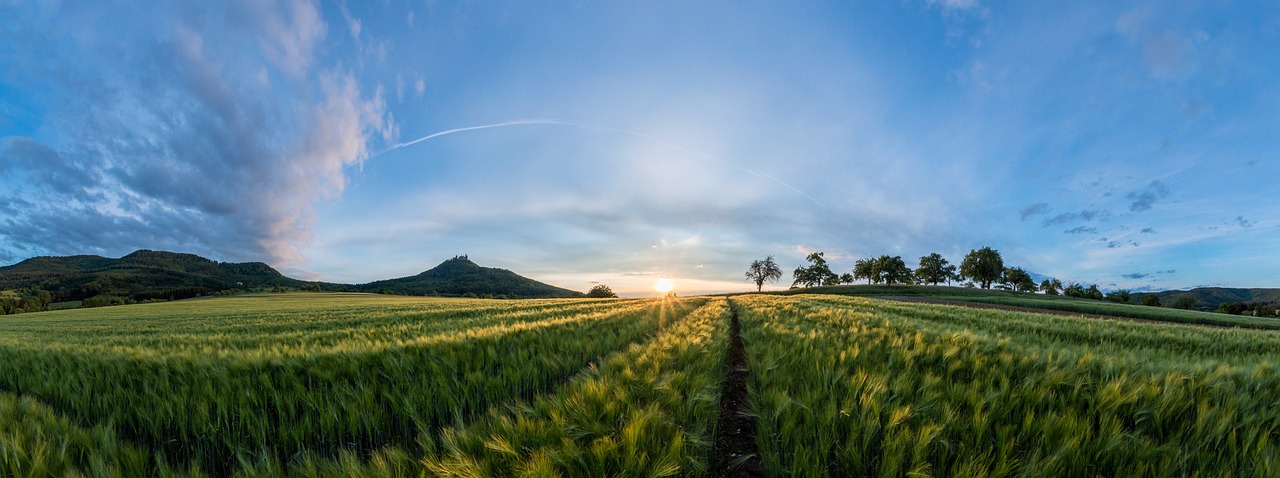
Sustainability and Environmental Impact
In today's world, where climate change and environmental degradation are pressing concerns, the role of blockchain technology in promoting sustainability within agricultural supply chains cannot be overstated. Imagine a system where every step of the agricultural process is transparent, traceable, and efficient. This is precisely what blockchain offers. By providing a secure and immutable record of transactions, it enables farmers, suppliers, and consumers to make informed decisions that can significantly reduce the environmental footprint of agricultural practices.
One of the most exciting aspects of blockchain is its ability to optimize logistics, which is crucial in reducing waste. For instance, by using real-time data to manage inventory and predict demand, farmers can minimize overproduction and spoilage. This not only conserves resources but also leads to a more sustainable approach to farming. When farmers know exactly how much produce will be needed, they can adjust their planting and harvesting schedules accordingly, leading to a decrease in unnecessary resource use.
Moreover, blockchain can facilitate better resource management. Through smart contracts, stakeholders can automate processes such as payments and deliveries, ensuring that resources are allocated efficiently. This means less time and energy wasted on administrative tasks, allowing farmers to focus on what they do best: growing food. Additionally, with a transparent ledger, it becomes easier to track the use of pesticides, fertilizers, and water, enabling farmers to adopt more sustainable practices.
To illustrate the impact of blockchain on sustainability, consider the following table that highlights key benefits:
| Benefit | Description |
|---|---|
| Reduced Waste | Optimized logistics and inventory management prevent overproduction and spoilage. |
| Efficient Resource Use | Smart contracts automate processes, ensuring resources are utilized effectively. |
| Better Tracking | Transparency in resource use helps farmers adopt sustainable practices. |
| Lower Carbon Footprint | Streamlined supply chains reduce emissions associated with transportation and waste. |
Furthermore, the environmental impact of blockchain extends beyond just the farm. By enhancing the entire supply chain, from production to consumption, blockchain can help consumers make more eco-friendly choices. When consumers can easily access information about the origin and sustainability of their food, they are more likely to support products that align with their values. This shift in consumer behavior can drive demand for sustainably produced goods, encouraging more farmers to adopt environmentally friendly practices.
In conclusion, the integration of blockchain technology in agricultural supply chains is not just a technological advancement; it is a step towards a more sustainable future. By enhancing transparency, improving efficiency, and promoting responsible resource management, blockchain has the potential to reshape the agricultural landscape for the better. As we continue to face environmental challenges, embracing such innovations will be crucial in paving the way for a more sustainable world.
- How does blockchain improve sustainability in agriculture? Blockchain enhances transparency, optimizes logistics, and improves resource management, leading to reduced waste and a lower carbon footprint.
- Can consumers influence sustainable practices through blockchain? Yes, by accessing information about the sustainability of products, consumers can make informed choices that support environmentally friendly practices.
- What are smart contracts, and how do they contribute to efficiency? Smart contracts are self-executing agreements that automate processes, reducing administrative tasks and ensuring resources are used effectively.
Frequently Asked Questions
- What is blockchain technology and how does it apply to agricultural supply chains?
Blockchain technology is a decentralized digital ledger that records transactions across multiple computers. In agricultural supply chains, it enhances transparency and traceability, allowing all stakeholders—from farmers to consumers—to track the journey of products from farm to table.
- How does blockchain improve transparency in agriculture?
Blockchain provides a clear, immutable record of every transaction, ensuring that all parties can access the same information. This level of transparency helps build trust among consumers, enabling them to verify the origins and quality of their food products.
- Can consumers really trace their food back to its source using blockchain?
Absolutely! With blockchain, consumers can easily access detailed information about the journey of their food, including where it was grown, how it was processed, and even how it reached the store. This empowers consumers to make informed choices about their purchases.
- What are some successful examples of blockchain implementation in agriculture?
Several companies have made strides in using blockchain for agricultural supply chains. For instance, IBM's Food Trust platform has helped various food brands enhance traceability, while Walmart uses blockchain to track produce, ensuring freshness and safety.
- What challenges do farmers and businesses face when adopting blockchain?
Adoption challenges include technological barriers, high initial costs, and the need for collaboration across the industry. Many stakeholders may also lack the necessary knowledge or resources to implement blockchain solutions effectively.
- How does blockchain technology help reduce fraud in agricultural supply chains?
By creating a secure and immutable record of all transactions, blockchain minimizes the chances of fraud. Each transaction is verified by multiple parties, making it nearly impossible to alter or falsify information without detection.
- What role do smart contracts play in agricultural supply chains?
Smart contracts automate transactions by executing agreements when predefined conditions are met. This reduces the potential for disputes and speeds up transactions, making the supply chain more efficient.
- How can blockchain promote sustainability in agriculture?
Blockchain can optimize resource management and logistics, helping to reduce waste and the carbon footprint of agricultural supply chains. By tracking resources more effectively, farmers can make better decisions that contribute to sustainability.
- Are there any regulatory concerns with using blockchain in agriculture?
Yes, the integration of blockchain raises regulatory questions. It's essential to develop a framework that ensures compliance with existing regulations while fostering innovation in the agricultural sector.

